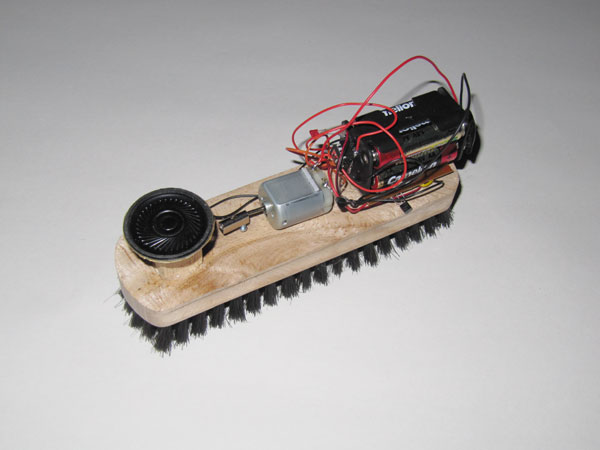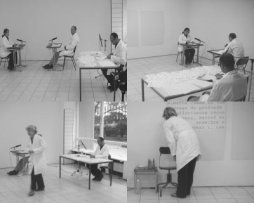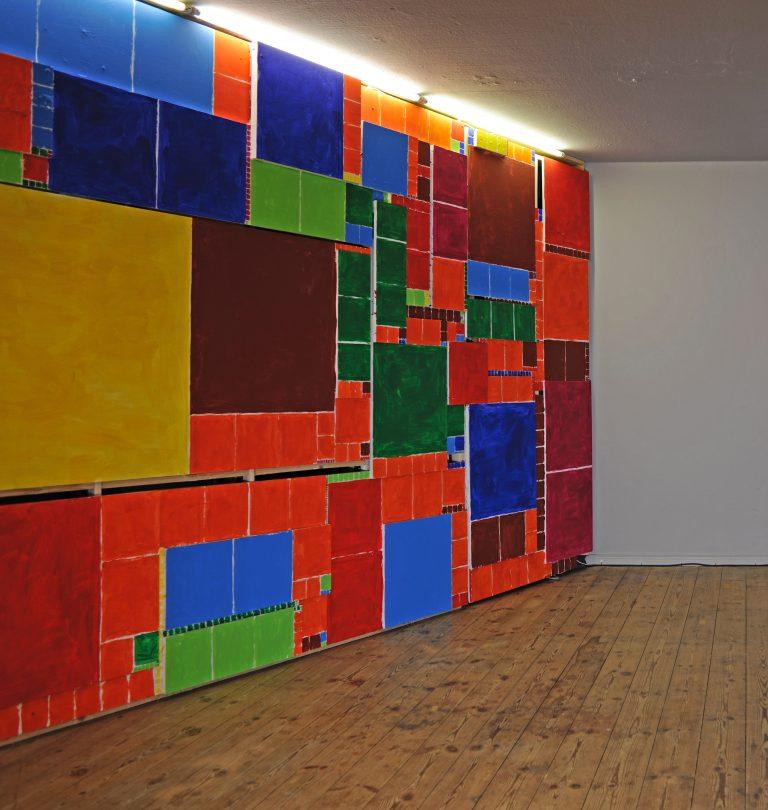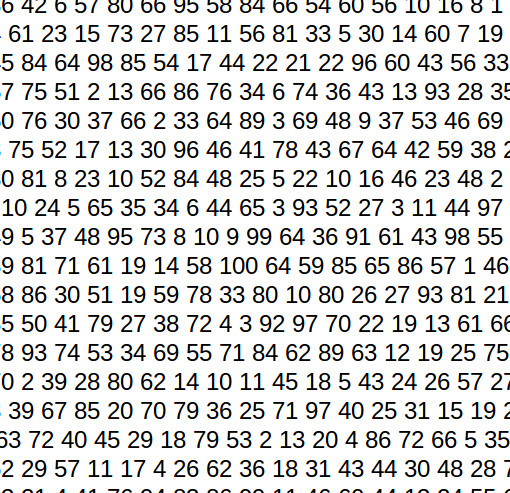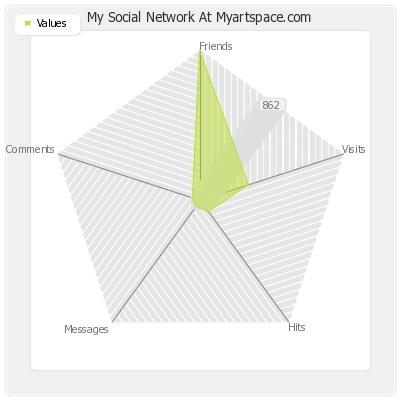Cut-up Text Walk
 An automated, location-based radio broadcast for a city walk. Whilst walking text fragments with a reference to the street name are broadcasted. The program is computer generated and will be received by the participants with normal FM radios.
An automated, location-based radio broadcast for a city walk. Whilst walking text fragments with a reference to the street name are broadcasted. The program is computer generated and will be received by the participants with normal FM radios.
While walking through the city the microcontroller will combine GPS localisation with the OpenStreetMap software and the Gutenberg free etext archive to create the audio source for a mobile radio broadcast. With the help of GPS coordinates and the OpenStreetMap the street names will be retrieved and used as search terms at Gutenberg.org. Excerpts of the results will be converted to audio (Festival Text to speech software) and broadcasted to the radios of the participants. The microcontroler will execute all steps automatically. For the audio tours a magneticfield detector will be used to get directions.
The artwork creates a fictional layer on top of the real world to create absurd or surreal situations.



Cut-up Text Walk is a form of psychogeography, a type of conscious wandering developed by Guy Debord and the Situationist International. Psychogeography attempts to reveal the ‘real city’ underneath what Debord called The Spectacle, which can be generally described as the flashy and seductive commodification of ideas.
Specifically, the audiotours draw on the concepts of the dérive and détournement. The dérive, or, “to drift,” involves walking around and trying to follow the emotional and psychological trajectories of an urban environment, rather than the ones planned out for you (the shortest commute from home to work, etc.) To pursue a dérive was “. . . to notice the way in which certain areas, streets, or buildings resonate with states of mind, inclinations, and desires, and to seek out reasons for movement other than those for which an environment was designed,” explained Sadie Plant in 1992.
Photos © Marlene Burz
Eine automatisierte, ortsabhängige Radiosendung für einen Stadtspaziergang. Dabei werden Textfragmente vorgelesen, die aus unterschiedlicher Literatur stammen, bei der der jeweilige Straßenname eine Rolle spielt. Das Programm wird computergeneriert und von den Teilnehmenden mit normalen UKW-Radios empfangen.
Während des Stadtspaziergangs kombiniert ein Mikrocontroller die GPS-Lokalisierung mit der OpenStreetMap-Software und dem Gutenberg-freien Etext-Archiv, um die Audioquelle für eine mobile Radiosendung zu erstellen. Mit Hilfe von GPS-Koordinaten und der OpenStreetMap werden die Straßennamen ermittelt und bei Gutenberg.org als Suchbegriffe verwendet. Auszüge der Ergebnisse werden in Audio (Text-zu-Sprache-Software) umgewandelt und an die Radios der Teilnehmer*Innen gesendet. Der Microcontroller führt alle Schritte automatisch aus. Für die Audiotour wird ein Magnetfelddetektor zur Orientierung verwendet.
Die Arbeit schafft eine fiktive Ebene über der realen Welt, um absurde oder surreale Situationen zu erzeugen.
Cut-up Text Walk ist eine Form der Psychogeography, wie sie von Guy Debord und der Situationistischen Internationale als eine Art bewusstes Gehen entwickelt wurde. Psychogeography versucht die “echte Stadt” unter dem was Debord Spektakel nennt freizulegen. Unter Spektakel versteht er die glitzernde und verführerische Kommerzialisierung der Ideen.
Die Touren beziehen sich genau auf das Konzept des Dérive und Détournement. Dérive oder streunen, bedeutet spazieren gehen und dabei den eigenen emotionalen und psychologischen Bahnen der städtischen Umgebung zu folgen, aber sich nicht auf eine geplante Infrastruktur zu verlassen (z.B den kürzesten Weg von der Arbeit nach hause). Ein Dérive zu verfolgen verlangt “. . . to notice the way in which certain areas, streets, or buildings resonate with states of mind, inclinations, and desires, and to seek out reasons for movement other than those for which an environment was designed,” erläuterte Sadie Plant 1992.

